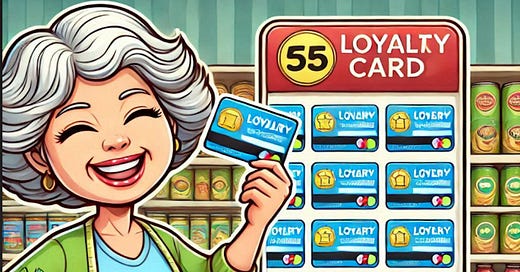Does it really pay to be loyal?
Frequent flyer cards and similar schemes have their pros and cons.
Loyalty schemes are a common feature in the retail landscape, used by businesses to reward repeat customers and build brand loyalty.
These programs can take many forms, including points-based systems, cashback offers, tiered memberships, or exclusive discounts. While they offer several advantages for both businesses and consumers, they are not without their pitfalls.
If you are a consumer — and aren’t we all? — understanding the dynamics of loyalty schemes can help you make informed decisions about where to spend your money.
First a definition: Loyalty schemes are marketing strategies designed to incentivise customers to engage frequently with a brand or business. They typically operate by offering rewards for repeat purchases or other desired behaviour, such as referrals or social media engagement.
They include:
Points-based programs, where customers earn points for each purchase, which can later be redeemed for discounts or free products.
Tiered systems, where benefits increase as you spend more, providing exclusive perks for top-tier members.
Cashback offers.
Subscription models, where you pay a recurring fee to access special discounts or services.
These schemes exist across various industries, from supermarkets to airlines, coffee shops and online retailers.
For the business’ point of view, loyalty schemes serve multiple purposes. They:
Encourage repeat business.
Increase the “customer lifetime value” or CLV — a metric of what you’re worth to them over time.
Create a point of difference between them and their competitors
Collect data, meaning they know who you are, have your email address and/or phone number, and have valuable insights into your behaviour, preferences and spending habits.
Build an emotional connection between you and them.
Loyalty schemes offer several advantages for consumers, including:
Discounts, free products and/ or cashback rewards.
Exclusive perks such as early access to sales, priority customer service, or special gifts.
Offers and rewards based on your individual preferences.
For businesses, there are advantages such as customer retention, increased spending, the creation of “brand ambassadors” among happy customers — and that all-important data.
But there are also cons for consumers, including:
Psychological traps. These programs can encourage overspending or purchasing items not needed to earn rewards.
Privacy, security and ethical concerns around the use of your data.
Points or rewards may have expiration dates, restrictive redemption options or low monetary value. Programs may devalue points over time, requiring you to spend even more to achieve your goals.
Some programs have confusing terms, making it difficult for customers to maximise or even gain benefits.
The upshot is that loyalty schemes can be a win-win for both consumers and businesses when thoughtfully designed and used responsibly. However, it is essential to approach them with a critical eye.
As a consumer, you should evaluate the true value of a loyalty scheme before committing to it.
Do you have any experiences or thoughts to share about loyalty schemes? Let us know!



